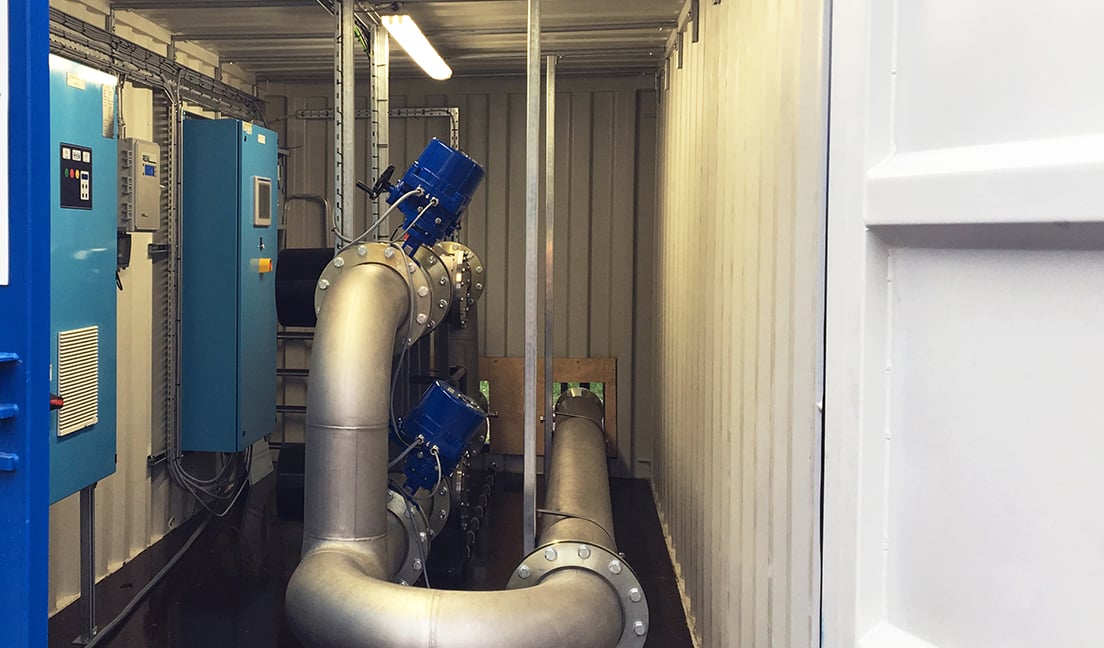It’s expected that water treatment facilities may face fluctuations across the year with the level of disinfection required to ensure our drinking water is safe. But, this presents an ongoing challenge for treatment plant operators who need to install and operate additional disinfection technology for temporary use while managing tight budgets and sustainability targets. Here, James Leigh, Regional Lead, Evoqua Water Technologies, discusses how deployable disinfection assets provide the answer.
The impact of seasonal agricultural activity coming into contact with a water supply, variations in reservoir levels or an unexpected parasite outbreak are just some of the reasons water treatment plants might need additional disinfection treatment at any point in time. While these events are unexpected at the point of occurrence, contamination is always a possibility and therefore a proactive approach to managing the risk is best practice.
One of the fastest, most sustainable and effective strategies to increase disinfection over a short period is using deployable assets. Put simply, a disinfection system that is ready and waiting to be deployed when needed. This can take the form of a containerised plant, which is manufactured off-site and delivered to a customer’s facility for easy installation alongside existing technology. At Evoqua, this has been possible using our design for manufacture and assembly (DFMA) capabilities to allow us to address build and engineering requirements in the design phase of a project.
Deployable assets are proving to be a useful regional risk management solution for water authorities who would have traditionally had to look at installing permanent assets at each site to solve the problem of contamination spikes. Being able to manage risks regionally by moving a disinfection system to different sites and when required – with minimal building works – offers a number of operational, economic and sustainability benefits.
As they are built off-site and housed in their own container, the build cost of a UV system as a deployable asset is lower as minimal civil works are needed and disruption on site is minimal. Crucially, planning permission isn’t required so projects can proceed quickly from commissioning to completion phases. This has been achieved in as a little as six weeks but can take up to 12 weeks.
There are also important environmental benefits to a deployable disinfection system. As the system is assembled off site, this reduces the carbon footprint of the supply chain due to minimal building work taking place at the treatment plant. This also works to minimise construction waste generated.
There are a range of solutions for drinking water applications that can take the form of a deployable asset, offering plants a range of benefits. For disinfection, Evoqua utilises its industry-leading UV and on-site electrochlorination technologies. UV disinfection is available in ultra-compact medium pressure and high output low pressure systems. UV offers effective and proven inactivation of microorganisms such as bacteria, viruses, moulds and pathogens without the use of chemicals. For residual treatment, Evoqua’s OSEC® system, on-site electrochlorination technology produces hypochlorite on-demand, using only salt, water and power. It’s safe, efficient and cost-effective.
Take a proactive approach to managing water contamination today and speak to an expert about how a deployable solution can work for your plant. Now is the time to ask yourself if your strategy is proactive enough, can you adapt your disinfection level quickly to manage contamination levels effectively and meet budget and environmental targets? If the answer is no, then we have the solution boxed up, quite literally. By planning ahead, we can have a more sustainable future.

